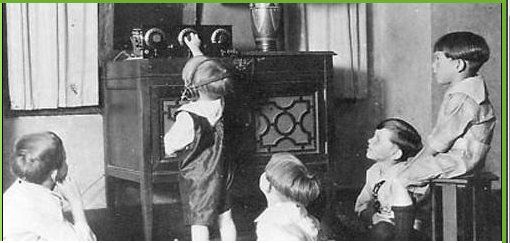Okay, I've been homeschooling for five years, I've had a son for nearly ten, and I've been reading books for 40! So how is it I missed The Sugar Creek Gang books? To make matters worse, I spent 14 years in Indiana--just a hop, skip, and a jump from the real Sugar Creek. Author Paul Hutchens began writing about the gang in 1939, but I'd never heard of the series till we received a set to review from Beloved Books.
First, a bit more about the series and then I'll share specifics about the audio set.
The stories are shared in first person by a character named Bill Collins, a red-headed, country boy who dreams of becoming a doctor. He and his best friends (usually referred to by their nicknames) make up the gang: Poetry, who's memorized hundreds of verses; Circus, the acrobat of the group, Big Jim, the leader; Dragonfly, who has the keenest eyesight; Little Jim, the best Christian boy of the group; and eventually Tom Till, a fellow red-head.
It's evident that the stories take place in a different era of American history--the boys attend a one room schoolhouse and Bill's dad plows behind a team of mules . It was an era before political correctness--, elementary school-aged boys carry a gun and kill a bear (and keep the cub for a pet), school begins with a Bible story and prayer, the whole town attends a multi-week tent revival . The stories are decidedly evangelical. Bill relates how he prays for his friends father to be saved, a teacher uses a lamb who follows one boy into school as an illustration about the Lamb of God, we sit alongside the boys at church, pray meetings and tent revivals.
With titles like The Swamp Robber and The Killer Bear you may think the stories are all action or would be too frightening to younger kids. But really Bill's stories are more slow and meandering like the namesake creek. He talks about doing chores, eating lunch with the parents, swimming in the creek. I think the most gruesome tidbit we heard was how Bill's dad rang the neck of the ol' rooster they were going to eat for supper.
We received Volume One of the audio version of the Sugar Creek Gang. It contains six stories on 12 CDs, each story lasting about 2 hours. These must have been aired on the radio at some point because there is music at the introduction and at intervals throughout, but its mostly just the narrator speaking. I've also noticed a few recapping the plot moments which must have been the start of a new episode. Bill introduces the members of the gang at the beginning of each story for the benefit of new listeners, but there are some plot points that continue from one story to the next so its best to start at the beginning and continue in order.
We love radio theater and audio books in our home already. I've credited my son's active imagination to the fact that he has to see the stories in his head as he listens (he'll also act out scenes as he listens, draw pictures of story events, or build "sets" with his Jenga blocks. Schnickelfritz would listen to the Sugar Creek gang at bedtime and we'd pop them in the car on errand day. I've been listening too and found some teachable moments to stop and discuss--Bill gets in trouble for forgetting to return home right after an errand and for forgetting to close the gate to the pigs. We've been struggling to help Fritz remember to check the dog's water and food regularly.
Beloved Books has six volumes of Sugar Creek Gang stories selling for $54.95. Each set has 12 Cds and about 12 hours of material so that works out to just over $4 per hour/CD which is actually quite a bargain (and don't worry about once and done, my son's been listening to them over and over). I'm not going to give a suggested age--there's nothing too scary for little ones and I've enjoyed listening too. The main characters are all boys, but I believe girls will find plenty to relate to.
There other audio titles include homeschooler's favorites like Little Britches, Gene Stratton Porter books, and G.A. Henty titles. And here's the best news--you can use discount code OZARK-20 to receive a 20 percent discount on your order.

I received a free copy of Volume One of the Sugar Creek Gang through the Schoolhouse Review Crew in exchange for my honest review. I was not required to write a positive review now was I compensated in any other way. All opinions I have expressed are my own or those of my family. I am disclosing this in accordance with the FTC Regulations.












































